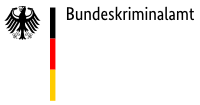
Basically, every article of clothing differs in some way from all other articles of the same type. The extent to which such differences can be used for a comparison of characteristics based on visual material, mostly video recordings by surveillance cameras, depends largely on the quality of the available images.
The first step in the process is to assess articles of clothing worn by a suspect with regard to standard characteristics used for purposes of comparison. These characteristics, known as group characteristics, include production-related structures such as patterns, design details, additions or applications that are typical of a certain type of textile. Colour, however, is of only limited value as a comparative criterion. Structures resulting from individual use, such as damage, wear or the formation of permanent characteristics (e.g. folds) make a given article of clothing unique.
 Re-enactment of a robbery scene
Re-enactment of a robbery scene
In order to determine which characteristics detected in a textile material are rendered visible under optimum photographic conditions, analysts at the KTI re-enact the relevant scenes with original textile articles, selecting a recording angle similar to that used at the crime scene. The models assume postures and positions that correspond (to the extent possible and recognizable) to those of the perpetrators as documented in the images obtained from the surveillance cameras. The greater the number of clothing items, masking articles, shoes and other objects (e.g. bags) available for comparison, the greater the probability of obtaining group or individual matches.
In many cases the recordings of video surveillance systems are unsuitable for identification purposes due to their low quality (low resolution, poor contrast or compression artefacts). In these cases merging images with the same scenes may produce an acceptable picture. If several similar photos are available interferences in the photos itself can be reduced or even removed by using redundancies in the photo.


This section of a photo which displays a trouser seam shows that increasing the contrast also increases the image errors. Such compression artefacts are common characteristics of poor video surveillance systems. By merging several similar images the interferences can be reduced which makes the distinctive structures of the seam visible.
